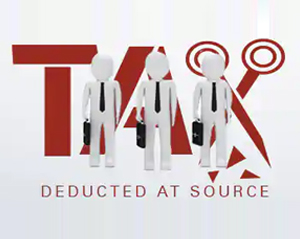Section 80CCC* of the Income Tax Act, 1961, is designed to encourage individuals to invest in specific savings instruments. The section allows taxpayers to claim a deduction of up to ₹ 1.5 lakh per annum from their taxable income for investments made in pension funds.
The purpose of the section is to promote long-term financial planning and ensure taxpayers are prepared for retirement.
Importance in Tax Planning
Section 80CCC is a crucial component of tax planning. It enables you to achieve two key objectives simultaneously - prepare for retirement and reduce your taxable income for the year. When you invest in a pension plan approved under Section 80CCC* of the Income Tax Act, 1961, you can not only secure your financial future but also benefit from a deduction of up to ₹ 1.5 lakh annually. This advantage makes Section 80CCC* an effective tool for individual retirement planning.
Eligible Investments Under Section 80CCC
A. Types of Pension Funds
Annuity plans offered by Life Insurance Corporation (LIC) and other insurance companies are covered under Section 80CCC*.
B. Conditions for Eligibility
The Section 80CCC* of the Income Tax Act, 1961 allows only individuals to claim a deduction. HUFs, Partnership firms, companies and Limited Liability Partnerships (LLPs) are not eligible for this deduction.
Tax Deduction Limit under Section 80CCC
The Section 80CCC deduction limit is capped at ₹ 1.5 lakh per annum. It is important to note that this limit is the combined value for all investments and savings eligible under Section 80C*, 80CCC* and 80CCD(1)* and not for an individual pension plan alone as per Section 80CCE.
A. Maximum Deduction Amount
It is important to note that the maximum deduction amount under Section 80CCC is ₹ 1.5 lakh per annum. Additionally, there are two more sections –
- Section 80CCD(1B)*: Allows for an additional deduction of up to ₹ 50,000 for contributions to the NPS, which is over and above the ₹ 1.5 lakh limit of Section 80C
- Section 80CCD(2)*: Provides a deduction for employer contributions to the NPS, where the limit is 10% of the salary if the employer is a Public Sector Unit (PSU) or other entities. For contributions made by the central or state government, the limit is 14% of the salary
B. Impact on Overall Deduction Limit
Under Section 80CCC* of The Income Tax Act, 1961, you can claim deductions up to ₹ 1.5 lakh in a financial year. This deduction can help you save up to ₹ 46,800 in taxes per annum if you fall into the 30% tax bracket.
Consider an example where you invest ₹ 1.5 lakh in an annuity plan offered by a life insurance company during FY 2023-24. In such a case, you can claim the full ₹ 1.5 lakh as a deduction under Section 80C* in your tax return for AY 2024-25. If you fall under the highest tax slab, which is 30%, you will be able to save ₹ 46,800 in taxes in a single year.
Taxation on Returns and Withdrawals
Tax Treatment of Pension Fund Returns
The tax treatment of pension fund returns varies depending on the type of investment you select. For instance, the Public Provident Fund (PPF) offers tax-free* returns, as it falls under the Exempt-Exempt-Exempt (EEE) category, where both the interest earned and maturity proceeds are exempt to tax. In contrast, returns from annuity plans are typically taxed as income based on your tax slab, even though the contributions may be eligible for deductions under Section 80CCC*
It is essential to understand the difference between exemptions and deductions. Exemptions refer to income or returns that are tax-free, while deductions reduce your taxable income up to a limit.
Tax Implications on Surrender or Premature Withdrawal
Tax implications on surrender or premature withdrawals can vary based on the type of pension plan you choose. For instance, there are no taxes on partial or premature withdrawals from a PPF. However, any premature exits from the NPS are subject to taxation.
Annuity plans also have strict rules regarding premature exits. These plans have a surrender period, which typically starts immediately after purchasing the annuity and can last between six to eight years. During this time, you are generally not allowed to withdraw your funds. If you still decide to withdraw your funds before the end of this period, you will have to pay a penalty depending on your insurance company’s policies.
It is crucial to review the specific rules and conditions of your pension plan to understand the consequences and tax implications associated with premature withdrawals or surrendering the policy.
Differences Between Section 80C, 80CCC and 80CCD
Key Differences and Similarities
Section 80C*: This section includes life insurance premiums, contributions to the PPF and NPS, investments in certain equity shares, tuition fees for children, National Savings Certificates, principal repayments on house loans and various others.
Section 80CCC*: This section specifically covers deductions for contributions made towards pension schemes. It primarily includes annuity plans from LIC or other insurance companies.
Section 80CCD(1B)*: This section pertains to contributions made to the National Pension System (NPS) and other central government pension schemes. It allows an additional deduction of up to ₹ 50,000 for such contributions, over and above the ₹ 1.5 lakh limit of Section 80C and 80CCC.
Similarities: All three sections promote the habit of disciplined savings to ensure your retirement financial security.
Differences: Section 80C covers several savings and investment options as well as expenses. Section 80CCC is focused solely on pension contributions to annuity plans offered by insurance companies. Further, Section 80CCD (1B) provides a specific deduction for NPS contributions, with an additional limit of ₹ 50,000 beyond the ₹ 1.5 lakh cap of Section 80C and 80CCC.
Integrated Tax Planning
It is advised to study the tax implications of your pension plans to know how you can make the best use of the available tax saving provisions. You must also contribute up to the maximum limit to get the full benefits.
For instance, under Section 80C*, you can claim deductions on various investments and expenses up to ₹ 1.5 lakh per annum. In addition, Section 80CCC* allows for deductions on contributions to pension schemes, also within the ₹ 1.5 lakh cap shared with Section 80C. Furthermore, Section 80CCD(1B)* provides an additional deduction of up to ₹ 50,000 for contributions to the National Pension System (NPS), which is separate from the ₹ 1.5 lakh limit of Sections 80C* and 80CCC*.
Remember, tax planning and retirement planning go hand in hand, and a proactive approach can help you ensure a financially comfortable retirement.
People like you also read...







